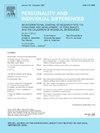一种“精细”的方法,解开了精神病、自闭症和述情障碍特征与情感、认知和运动共情之间的联系
IF 2.6
2区 心理学
Q1 PSYCHOLOGY, SOCIAL
引用次数: 0
摘要
非典型共情与精神病和自闭症特征有关;然而,研究通常将移情的情感和认知方面混为一谈。此外,运动共情被认为是共情的另一个方面,主张进一步划定共情的维度。此外,述情障碍可能影响他人对情绪、认知或运动状态的反应。目前的研究调查了精神病、自闭症和述情特征是如何与这些共情方面联系在一起的。非临床参与者(N = 212)完成了情感、认知和运动共情、原发性和继发性精神病、自闭症和述情特征的在线自我报告测量。一个子样本(N = 157)也使用虚拟代理完成了运动共情(即行为同步性)的行为测量。虽然所有特征都与认知同理心和行为同步性降低有关;通径分析支持认知共情困难通过述情障碍仅对原发性精神病的中介模型。继发性精神病和述情障碍与运动共情增加有关,特别是模仿负面情绪的倾向。相比之下,原发性精神病与情感共情减少和积极情绪模仿抑制有关,尽管报告了由行为同步引起的自我-他人重叠体验。总的来说,这些发现强调了“精细”方法的必要性;描述共情子层面在非典型共情中的作用。本文章由计算机程序翻译,如有差异,请以英文原文为准。
A “fine-cuts” approach disentangling psychopathic, autistic and alexithymic traits in their associations with affective, cognitive and motor empathy
Atypical empathy is seen in relation to psychopathy and autistic traits; however, studies typically conflate affective and cognitive facets of empathy. Moreover, motor empathy has been suggested as another facet of empathy, advocating for further delineation of empathy dimensions. In addition, alexithymia may affect responding to emotional, cognitive or motor states in others. The current study investigated how psychopathic, autistic and alexithymic traits are associated with those empathy facets. Nonclinical participants (N = 212) completed online self-report measures of affective, cognitive and motor empathy, primary and secondary psychopathy, autistic and alexithymic traits. A subsample (N = 157) also completed a behavioral measure of motor empathy (i.e., behavioral synchrony) using a virtual agent. Whilst all traits were associated with reduced cognitive empathy and behavioral synchrony; path analyses supported a mediation model of cognitive empathy difficulties through alexithymia only for primary psychopathy. Secondary psychopathy and alexithymia were associated with increased motor empathy, specifically tendencies to mimic negative emotions. In contrast, primary psychopathy was associated with reduced affective empathy and inhibition of positive emotion imitation, despite reporting self-other overlap experiences induced by behavioral synchrony. Overall, these findings highlight the need for a “fine-cuts” approach; delineating the role of empathy subfacets in atypical empathy.
求助全文
通过发布文献求助,成功后即可免费获取论文全文。
去求助
来源期刊

Personality and Individual Differences
PSYCHOLOGY, SOCIAL-
CiteScore
8.50
自引率
4.70%
发文量
577
审稿时长
41 days
期刊介绍:
Personality and Individual Differences is devoted to the publication of articles (experimental, theoretical, review) which aim to integrate as far as possible the major factors of personality with empirical paradigms from experimental, physiological, animal, clinical, educational, criminological or industrial psychology or to seek an explanation for the causes and major determinants of individual differences in concepts derived from these disciplines. The editors are concerned with both genetic and environmental causes, and they are particularly interested in possible interaction effects.
 求助内容:
求助内容: 应助结果提醒方式:
应助结果提醒方式:


